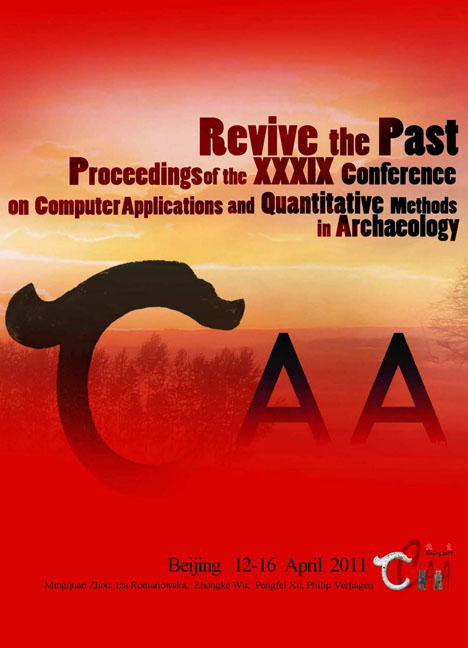 Revive the Past
Revive the Past A Conceptual Model of the Main Archaeological Monuments of Crete
Published online by Cambridge University Press: 23 June 2021
Summary
Abstract:
Conceptualization of information allows improved visualization and manipulation of large amounts of data. Especially in digitization of cultural heritage, and when aiming at presenting more than one monument, abstraction of information becomes the key solution. Our proposed application aims to present the main archaeological monuments of Crete through a conceptual 3D model. It allows the user to navigate among all the main monuments and approach them gradually in different levels of detail. Furthermore, the ability to switch between the seven historical periods offers a comparative study of their evolution in time. By providing the minimum needed information at each level of abstraction, “levels of detail”, we can create an online platform, light and easy to use.
Key Words: Conceptual Modeling, 3D, Abstraction, Level of Detail, Information Management
This paper aims to present the work our research team has been carrying out on designing a conceptual 3D model of the main historical monuments of Crete throughout time. We are working on creating an online platform that would be open to the public and would aim to promote the cultural heritage of Crete through a simple, user-friendly, intuitive environment.
Crete is the largest island of Greece, located to the south, famous for its rich cultural history, which dates back to the Middle Palaeolithic 128,000 years ago. Crete was the center of the Minoan civilization (2,700-1,420 BC), the first civilization in Europe. Since then, a large number of monuments have been documented throughout the different historical periods, the most important of which are the following seven:
1. Minoan,
2. Hellenistic,
3. Roman,
4. Byzantine,
5. Venetian,
6. Ottoman,
7. Modern.
Our prime challenge has been how to manage such a large amount of information over the Internet, in a transparent, light and simple way for the end user, in addition to offering the ability to compare data over time i.e. the historical periods. In order to achieve this we have been using the notion of Conceptual Modeling along with the principles of Model Based Information and Object Oriented Databases. The idea is simple: instead of having all information to its full extend available up front we break it into nodes, levels of abstraction, called “Levels of Detail”, providing the minimum information needed at each given time. Information is stored on each object, each monument, along with its different Levels of Detail.
- Type
- Chapter
- Information
- Revive the PastProceedings of the 39th Conference of Computer Applications and Quantitative Methods in Archaeology, pp. 273 - 275Publisher: Amsterdam University PressPrint publication year: 2012


